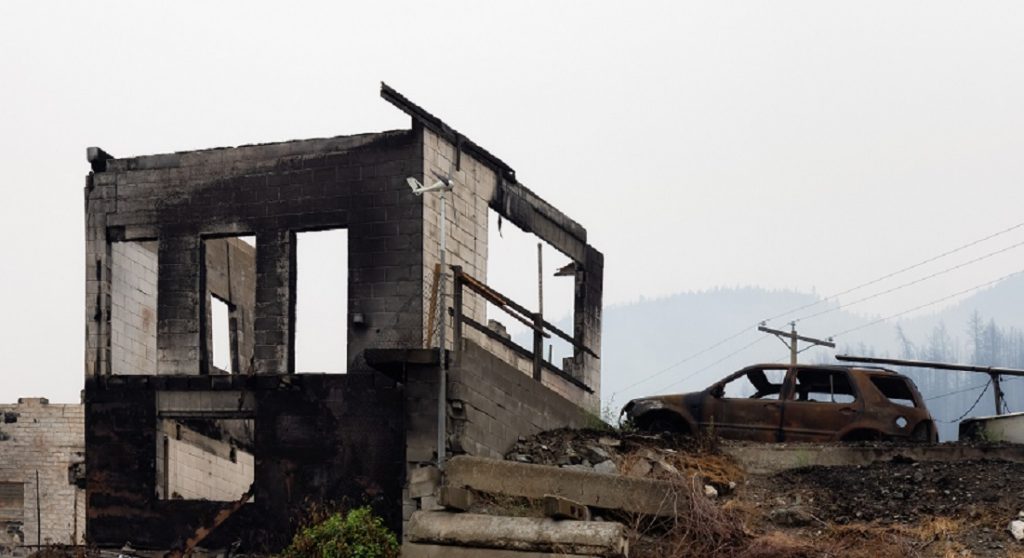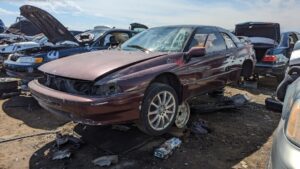Inside the hidden, one-year journey toward Lytton, B.C.’s post-wildfire rebuild

To the naked eye, not much has changed since Lytton, B.C. was razed by a June 30, 2021 wildfire, causing an estimated $100 million in insured damage.
Coming up on the fire’s one-year anniversary, debris-removal work has finally begun for insured residents of damaged homes and businesses. But the physical landscape largely remains the same since Lytton set a Canadian temperature record of 49.5 C, providing a backdrop to last year’s devastating wildfire.
Unseen, however, is an extraordinarily complex claim negotiation that’s taken place between Canada’s P&C insurance industry, the provincial government and the federal government. The aim of the protracted discussions is to make sure the village is rebuilt safely, consistently, and more fire-resistant than it was before.
Rob de Pruis, Insurance Bureau of Canada’s national director of consumer and industry relations, has 30 years of history in the P&C industry (more than 22 of it in the claims area), and says he’s never seen a claims resolution process with so many moving parts.
He said four things contributed to the particular care with which the Lytton rebuild has been treated. Chief among them has been the archeological aspect of the reconstruction process.
“The village of Lytton has been continuously inhabited by indigenous communities for more than 10,000 years,” De Pruis observed in a recent interview with Canadian Underwriter. “There are numerous designated archaeological historic sites within the village, and this area is a high-probability archaeological area.
“So anytime you’re disturbing the soil, you want to make sure that we are sensitive and respectful to the archaeological concerns.”
Dozens of artifacts have already been found during the preliminary process of debris removal, he said. Many of them are known as ‘ditigan,’ an archeological term for stone tools or flakes of stone tools that have been found.
“That’s the vast majority of artifacts,” De Pruis said. “But there is also pretty high probability there [may] be other significant archaeological artifacts found as well…there is even the potential for human remains to be found.”
For this reason, Canada’s insurers are working carefully with the provincial and federal governments, the villagers, and First Nations communities on the debris-removal process. Aspects of the process must be performed under the B.C. Heritage Act, which adds another layer of complexity.
“There are limited archaeologists available,” De Pruis noted. “So, it takes a little time to get the permits, because we’re doing a permit here for dozens and dozens of properties around the village limits.”
Such permitting requires training of claims professionals to help people on site who are sifting through all of the soil. If something is discovered, claims professionals in the area want to make sure resources are in place to do the necessary follow-up work, depending on the nature of the discovery.
Which brings up a second major factor complicating the Lytton rebuild – the ratio of insured to uninsured wildfire losses. This in turn raises the issue of how to maintain a consistent rebuild process for both insured and uninsured residents.
For example, while P&C insurers are following the required archeological and clean-up protocols, much of the uninsured damage is out of scope of P&C insurers, which are not responsible for restoring uninsured loss or damage. Which raises the question, are the uninsured following the same protocols as P&C insurers for a safe and consistent rebuild?
Or, as De Pruis asks: “Who is going to be paying anyone for the uninsured archaeological components, the debris removal? Who’s responsible for that? The individual homeowner? Is it the government? It’s not the insurance industry, because they’re not insured.”
These questions were part of the behind-the-scene preparations leading to the debris clean-up. Here, De Pruis credits the B.C. provincial government for contributing almost $50 million towards the reconstruction efforts.
CBC reported last month the federal government would spend $77 million to help rebuild Lytton in a more fire-resilient way.
“More than three quarters of the new funding — $64 million — will go toward new, fire-resistant public buildings like community centres and libraries,” Rhianna Schmunk reported for the CBC. “The remaining $13 million is set aside for small- and medium-sized businesses and insured homeowners to rebuild houses that are fire-resistant.”
Consistency factors into the third area of complexity, which has to do with the limited available resources to do the work, De Pruis observed. Before the fire, Lytton had a population of about 250 residents.
“So, we don’t have a huge community like a major metropolitan center that has dedicated insurance people, dedicated risk managers, a huge public works department that can do all this work, and tens or hundreds of millions of dollars available,” he said.
“We have very limited resources here. Public works [has basically] just one person to do all the work they [need]. They don’t have the money to do all the necessary clean-up work. So, it takes some time to get the province to commit to those funds and also to quantify what kinds of funds are needed, and also to get the right people in place.
“When you start talking about contractors, potential soil contamination and cleanup, and where you’re going to put the debris, and some of the unique challenges like the archaeological component — it takes a lot of time to get qualified professionals in place.”
Finally, fire is no stranger to Lytton. De Pruis noted the town has seen industrial fires in the 1930s and 1940s, which raises the issue of historical soil contamination. Some of that needs to be cleaned up in order to make sure the town’s rebuild is safe. The process is complicated by the fact that the village lost all of its print and digital records in the fire — including its bylaws and tax records.
And so historically, commercial vehicles in previous fires may have leaked acid into the ground from burned batteries, or mercury contained in the headlamps. Rail workers may have left railway ties in (now unknown) places. And asbestos in some buildings may have floated into other sites where insurers may be reconstructing in the wake of the 2021 fire.
“The question is whether that [burned] vehicle [for example] is on an insured or uninsured property. Who’s responsible for that soil contamination cleanup? And also, who is doing the sampling for that area?” says De Pruis.
“It takes some time to go through all of those processes to get a consistent process that applies to everyone, whether you’re insured or uninsured, with the ultimate goal of this community being safe to live in for years to come.”
Feature photo courtesy of iStock.com/edb3_16



